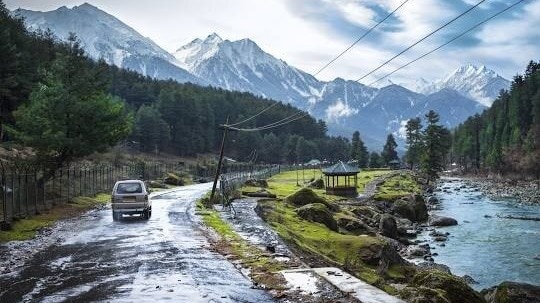The April 22 terror attack in Pahalgam, which left 26 tourists dead, is being seen as a devastating inflection point for Kashmir—not just as a tragedy of lives lost, but as a potentially crippling blow to an economy that had only recently started showing signs of a meaningful revival.
The impact of the attack is now expected to reverberate across sectors, particularly tourism, and could derail years of steady economic progress built on improving security, investor confidence, and visitor footfall.
Until the attack, Jammu & Kashmir’s economic trajectory had been robust. The region’s real GSDP for 2024-25 was projected to grow at 7.06%, with a nominal GSDP estimated at ₹2.65 lakh crore—a reflection of consistent momentum. Between 2019 and 2025, the Union Territory clocked a compound annual growth rate of 4.89%, while per capita income was expected to touch ₹1,54,703 in FY25, up 10.6% year-on-year.
Much of this growth was underpinned by relative stability. Terror incidents had plunged from 228 in 2018 to just 46 in 2023—a nearly 99% decline. It was this peace dividend that fuelled investment, tourism, and a renewed economic narrative.
The most immediate and visceral damage has hit tourism, a sector that contributes 7–8% to Jammu & Kashmir’s GSDP according to the official Economic Survey. The Economic Survey and budget documents do not provide a specific rupee value for the sector, but with the nominal GSDP at ₹2.65 lakh crore, this places the annual value of tourism for the entire Union Territory in the range of ₹18,500–21,200 crore. The government has set an ambitious goal to increase tourism’s share of GSDP from 7% to at least 15% in the next 4–5 years.
The Pahalgam attack occurred at the height of the peak tourist season (April to October), triggering a wave of cancellations that threatens to decimate earnings.
The timing couldn’t have been worse. Kashmir was riding a high: tourist arrivals had climbed from 34 lakh in 2020 to a record 2.36 crore in 2024, including 65,000 foreign tourists. The 2025 season had opened strong too, with 8.14 lakh visitors to Srinagar’s Tulip Garden in just 26 days.
Now, that momentum is in jeopardy. Travel agents report up to 90% cancellations in some segments, particularly from eastern India, where states like West Bengal account for a significant 30% of annual inflows. Bookings of around 300 tourists per day from Bengal are now in doubt.
Kashmir’s tourism ecosystem is vast: over 1,500 houseboats, 3,000+ hotel rooms, countless taxi operators, tour guides, pony handlers, and handicraft sellers all depend on it. Many have taken loans or sold assets to invest in this growing opportunity. The attack has abruptly converted these growth bets into potential liabilities. “We will incur heavy losses,” a local operator said, reflecting widespread anxiety.
The fallout isn’t limited to tourism alone. The attack threatens to drag down GSDP projections, halt infrastructure projects, and scare off both domestic and international investors. Kashmir, once pitched as a rising investment destination, now faces a credibility crisis. FDI inflows could slow, and real estate investments in tourism-linked areas may freeze.
Ancillary sectors—from transport and banking to retail and handicrafts—are already feeling the strain. Loan defaults from tourism-linked businesses are expected to rise, putting pressure on local banks. Even sectors like agriculture and horticulture, which rely on seasonal demand surges, could see knock-on effects.
The unemployment rate, which had improved to 6.1% in 2023-24 from 6.7% in 2019-20, may reverse, and the start-up ecosystem—which saw a 287% increase in DPIIT-registered ventures since 2020—could stagnate.
What makes the Pahalgam attack particularly damaging is its deliberate targeting of tourists—a rarity even in the Valley’s long, troubled history. Unlike previous incidents that avoided civilians, this assault punctures the carefully cultivated narrative of normalcy and hospitality that had brought Kashmir back onto the travel map.
Source:https://www.businesstoday.in/india/story/rs21000-crore-on-the-line-pahalgam-triggers-existential-crisis-for-kashmirs-tourism-industry-473329-2025-04-23?utm_source=rssfeed

